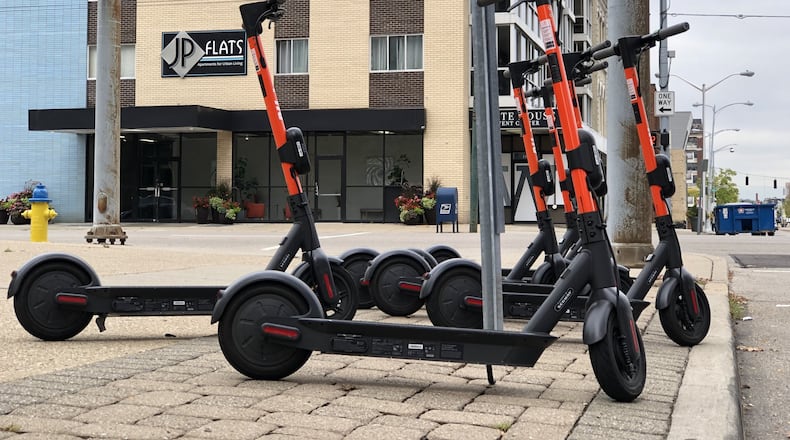In its nine years of operation, Link served over 66,000 unique riders who took more than 120,000 trips. That shows there is a significant demand. And the true value is hard to quantify due to the unique role that shared micromobility options play.
Studies have shown that over half of car trips in the U.S. are under three miles. That’s a distance where bikes and scooters thrive – efficiently, affordably, and emission-free. In a city like Dayton where the car will always be the predominant mode of transportation, alternative options can’t replace every car trip, but they are perfect for those in between destinations that are a bit too far to walk but still close enough that getting in your car, driving, and finding a parking spot shouldn’t be your only option. The bike share system was a key connector between Downtown Dayton and nearby neighborhoods like St. Anne’s Hill/Huffman, Grafton Hill, Wright Dunbar, South Park, and the University of Dayton.
I’m certainly not planning to get rid of my car anytime soon, but I do want to have choices for how I get around town so I don’t need to drive every time I want to get lunch or run a quick errand. And when individuals have more transportation choice, drivers and businesses benefit too. Studies have found that bikeshare reduces traffic congestion, and when more people can visit destinations downtown or in historic neighborhoods without needing to take up a parking space, more remain open for customers coming from farther away.
This benefits our local small businesses, many of which have been struggling post-COVID. Think of a downtown worker biking to Wright Dunbar for lunch, or a UD student studying over coffee in the Oregon District. Destinations in those distances are often skipped entirely if driving feels like a hassle. And in an era of remote work, having flexible, easy transportation choices can make the difference between staying in or getting out, which translates to more foot traffic and dollars spent in our downtown and neighborhood corridors.
Dayton and the MVRPC have made bold plans for active transportation. Dayton’s vision is that “people of all ages and abilities living, working, and visiting the City of Dayton have access to affordable, safe, and convenient methods of cycling, walking, and other types of micro-mobility.” We’re seeing new protected bike lanes and other safe street infrastructure which is a big deal, but losing bikeshare and scooters at the same time sends the opposite message and puts a major damper on that progress.
Dayton is far from along in facing challenges with bikeshare. Rising costs, insurance hurdles, and operational challenges have impacted cities nationwide. But when Cincinnati’s bikeshare program was suspended, City Council gave $200,000 to restart it. “We can’t be a growing, thriving city if we aren’t able to sustain a public bike share,” said Councilman Reggie Harris. “I know sometimes in a community we often get met with ‘Who rides bikes?’ or ‘Who cares about bikes?’ But the reality is that a lot of people in our city ride bikes, and we have a decade’s worth of data to support that.”
Dayton has that data too, and given the economic, accessibility, and neighborhood vitality benefits, to say nothing of the personal health and broader environmental impacts, it’s important not to let shared micromobility completely disappear.
Daytonians can certainly still ride their own bikes and scooters, but shared systems offer low-cost access both short or long-term, without the hassle of storage or maintenance. And e-assist options open the door to more people of varying ages and ability levels.
An article announcing Link’s suspension mentioned a “potential transfer to an alternative community partner since the nonprofit does not want to see the program disappear.” It’s unlikely to be easy to find a sustainable solution, but hopefully leadership and community partners see the value in a more connected and accessible Dayton and recognize that some form of shared micromobility is worth prioritizing.
About the Author

